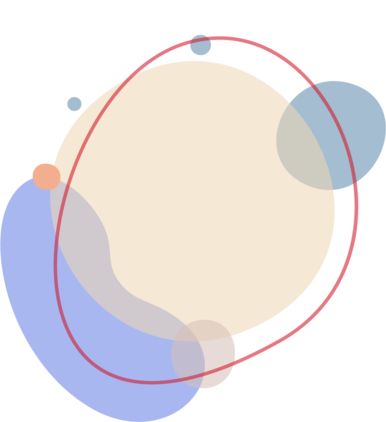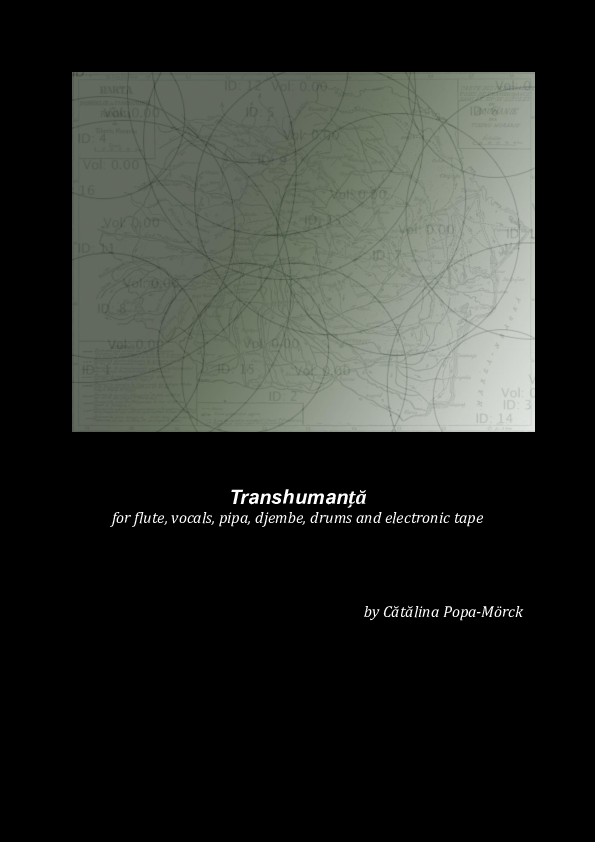“Transhumanță (= transhumance) is the action or practice of moving livestock from one grazing ground to another in a seasonal cycle, typically to lowlands in winter and highlands in summer. It comes from French, from the verb transhumer and is based on Latin trans- ‘across’ + humus ‘ground’.” (OxfordLanguages, Oxford University Press, last modified in 2022. accessed on the 18th of May 2022)
The performance piece is programmatic in nature and should be viewed as a whole rather than a collection of songs. Transhumanță, as the definition suggests, explores the (imagined) highs and lows of the nomadic lifestyle led by Romanian shepherds as they travel far away from home with their flock.
Upon thinking about the theme, it brought up feelings of peace, nostalgia, missing home, loneliness but also the occasional happiness in the face of great challenges and it reminded me of an old folk Romanian poem called The Little Ewe Lamb. The epic poem tells the story of three shepherds who set out on the journey together as a way of combatting loneliness, however, early on, two of them get jealous of the third's “better sheep and ruthless dogs” and plot to murder him in an attempt to steal his possessions. One of the little lambs feels sorry for her master and tells him all about the plan who laughs in the face of death and accepts his destiny with peace and serenity.
Thus, the five parts of the suite directly correspond to the five major scenes identified in the poem (Introduction, Murder plot, Warning from the little lamb, Acceptance, Wedding theme as a metaphor for death) as they try to paint a sonic picture of the landscape and events, each with a unique composition style. For example, in terms of musical language style choices, the second part: The Murder Plot is based upon black metal chord progressions, in a stretched-out tempo with blues rhythmic elements and a traditional ABCAB structure where C corresponds to an almost traditional classical concerto flute cadenza, while the 4th part: Warning from the Little Lamb represents purity and naivety through a scaled down acoustic song for pipa and voice.
Initially written for flute, jazz vocals, traditional vocals, pipa, djembe, jazz drums and electronic tape, this piece was also reimagined in a reduced arrangement for flute, vocals, pipa, drumkit and live electronics, where, with the help of motion sensors, the audience could be a part of the creative process by literally following the nomadic paths marked on the performance hall's floor.
In a poetic turn of events, the meeting of people coming from a jazz (vocals, drums), traditional Chinese music (pipa), classical music background (flute), world music (djembe) and four different parts of the world (Sweden, Croatia, Taiwan and Romania), embarking on a musical journey together, trying to find common ground while exploring the many available sonic routes corresponds beautifully to both the story itself but also to the main theme: transhumanță (across ground). The electronic tape was meant to support the storytelling aspect by providing a narration of the poem in original Romanian language and sounds obtained through field recordings, as well as cue the beginning of each individual part.
It is difficult to pin-point the exact musical genre where our music is located but it revolves around contemporary classical music with jazz, world music and electronica influences. While this may sound as a very vast area to cover, the music that we are working on sits quite comfortably in the same category as music written by 20th century composers such as Béla Bartók, George Enescu or Luciano Berio in the sense that it uses traditional notation to translate and transform folk music from different areas, however, it relies on contemporary instrumentation, extended techniques and technology to communicate its internal message. Given that I have composed the music with the specific musicians in mind and even though most of it is written out, there is quite a high level of freedom in terms of interpretation and performance choices. Playing with them has also served as an inspiration in terms of musical writing style and the improvisational sections draw from all of our general music background. The result is something that has been described as “traditional folk music of a fictional country”.
Communicating (musically) across genres (classical, jazz, folk, rock in this case) can be difficult but I think that this piece serves as a demonstration of how such a meeting can be facilitated and opens doors for future development in this direction. Finding common ground in terms of vocabulary and musical language has been a main focus in the development of the material and the resulting notation standards that we have agreed upon are a stepping stone towards creating more cross-genre works. While aimed mostly towards facilitating the performance of this piece by classical musicians and making them more comfortable with improvisation in a performative setting, I have noticed that working on the piece inspired the other musicians involved to seek such collaborations and gave them indications of how to communicate their musical wishes in a mutually understandable language.
Transhumanță - complete score + backing tracks
as used for the performance from the 22nd of November 2022
Transhumanță, for flute, vocals, pipa, djembe, drums and electronic tape
Live from Gothenburg, 22nd of November 2021




